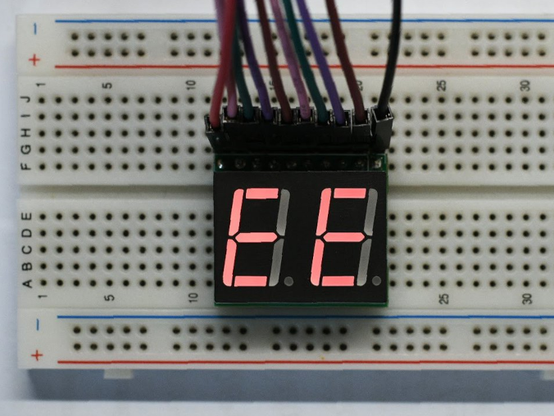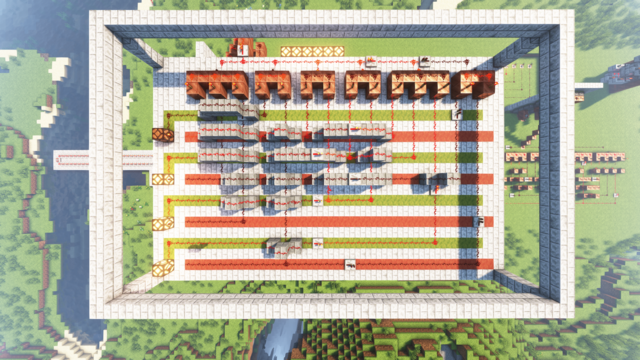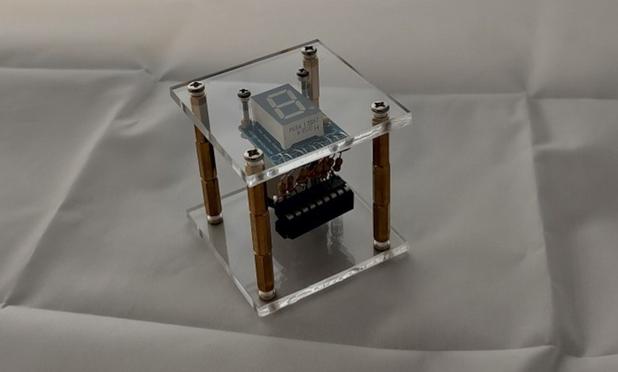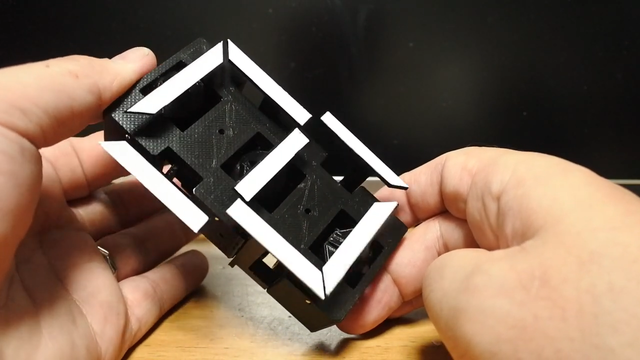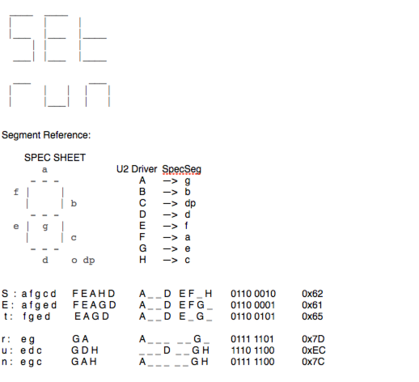https://blog.tindie.com/2025/02/hexadecimal-led-displays/
https://blog.tindie.com/2025/02/hexadecimal-led-displays/
https://blog.tindie.com/2025/01/retrolite-a-modern-retro-seven-segment-display/
Been playing a lot of #minecraft over the last couple of weeks... Here is a #thread showing what is being built:
#8bit #redstone #sevensegment #display #norlogic #nor #and #or #not #rca #ripplecarryadder #fulladder #combinationallogic #digitallogic #truthtable #karnaughmaps #kmaps #sequentiallogic #quinemccluskey #tree #log #linear #fpga #fetch #execute #decode #load #store #pipeline #computerengineering #earlelatch #srlatch #dflipflop #dlatch #mux #bch #hexadecimal #register
Electronic Dice Is Introduction To Microcontroller Programming
By now most of us are familiar with the Arduino platform. It's an inexpensive and fairly easy way into the world of microcontrollers. For plenty of projects, there's no need to go beyond that unless you have a desire to learn more of the inner workings of microcontrollers in general. [Cristiano] was interested in expanding some of his knowledge, so he decided to build this electronic dice using a PIC microcontroller instead of the Arduino platform he was more familiar with.
As a result, this project is set up as a how-to for others looking to dive further into the world of microcontrollers that don't have the same hand-holding setup as the Arduino. To take care of the need for a random number for the dice, the PIC's random number generator is used but with the added randomness of a seed from an internal timer. The timer is started when a mercury tilt switch signals the device that it has been rolled over, and after some computation a single digit number is displayed on a seven-segment display.
While it might seem simple on the surface, the project comes with an in-depth guide on programming the PIC family of microcontrollers, and has a polish not normally seen on beginner projects, including the use of the mercury tilt switch which gives it a retro vibe. For some other tips on how to build projects like this, take a look at this guide on how to build power supplies for your projects as well.
#microcontrollers #beginner #dice #die #howto #microcontroller #pic #randomnumber #sevensegment #timer
One Stepper Plus a Whole Bunch of Magnets Equals a Unique Seven-Segment Display
Sometimes the cost of simplicity is extra complexity. It seems counterintuitive, but it seems to be true. And this single-motor mechanical seven-segment display seems to be a perfect example of this paradox.
On second thought, [aeropic]'s mechanism isn't really all that mechanically complicated, but there sure was a lot of planning and ingenuity that went into it. The front has a 3D-printed bezel with the familiar segment cutouts, each of which is fitted with a pivoting segment, black on one side and white on the other.
Behind the bezel is a vertical shaft with three wheels, one behind each horizontal segment, and a pair of horizontal shafts, each with two wheels behind each vertical segment. The three shafts are geared to turn together by a single stepper in the base. Each wheel has ten magnets embedded in the outer circumference, with the polarity oriented to flip the segment in front of it to the right orientation for the current digit. It's probably something that's most easily understood by watching the video below.
We've seen quite a few of these mechanical seven-segment displays lately -- this cam-and-servo mechanism comes to mind. We love them all, of course, but the great thing about [aeropic]'s display is how quiet it is -- the stepper is mostly silent, and the segments make only a gentle clunk when they flip. It's very satisfying.
#mischacks #halleffect #magnet #neodymium #polarity #sevensegment #stepper
A One-Servo Mechanical Seven-Segment Display
The seven-segment display may be a bit prosaic after all these years, but that doesn't mean there aren't ways to spice it up. Coming up with a mechanical version of the typical photon-based display is a popular project, of which we've seen plenty of examples over the years. But this seven-segment display is quite a mechanical treat, and a unique way to flip through the digits.
With most mechanical displays, we're used to seeing the state of each segment changed with some kind of actuator, like a solenoid or servo. [Shinsaku Hiura] decided on a sleeker design using a 3D-printed barrel carrying one cam for each segment. Each hinged segment is attached to an arm that acts as a follower, riding on its cam and flipping on or off in a set pattern. Which digit is displayed depends on the position of the barrel, which is controlled with a single servo and a pair of gears. It trades mechanical complexity for electrical simplicity and overall elegance, and as you can see from the video below, it's pretty snappy.
We think the best part of this build is figuring out the shape of the cams. We wonder how they compare to the cam profiles in [Greg Zumwalt]'s mechanical display; it uses two separate discs with grooves, but the principle is pretty much the same.
Thanks to [Jan Derogee] for the tip.
#mischacks #7segment #cam #digit #display #follower #linkage #mechanical #servo #sevensegment
Mesmerizing Mechanical Seven-Segment Display
Seven-segment displays are ubiquitous. From where I'm writing this, I can see several without even having to swivel my chair. We're all familiar with their classic visage; slightly italicized numbers that are brought to life by LEDs. There are a boatload of variants available- you can get displays with a decimal point, ones with multiple numbers, and even versions in just about any color you desire, but at the core they're all basically the same thing- an array of LEDs sitting behind a faceplate. Except for those ones that have some gears inside.
Wait, what?
You read that right- a seven-segment display that contains gears, along with a handful of cams for good measure. Artist [Kango Suzuki] created this stunning all-mechanical seven-segment display that sequentially counts up from zero to nine when a thumbwheel is spun. All of the components are cut from wood and mesh together beautifully, complete with a satisfying click when the display rolls into a new digit, which you can hear in the video at the above link. You may recognize [Kango]'s style from this incredible mechanical clock he made a few years back. Unlike his earlier work, the seven-segment display is tiny, relatively speaking. Maybe we'll see it integrated into a larger project some day, like a mechanical-digital clock.
We just love when somebody uses intricate mechanisms to artfully emulate some piece of existing tech. This isn't even the first time we've seen a mechanical seven-segment display; [Peter Lehnér] built one back in 2019, and judging by [Kango]'s twitter feed, it appears to have inspired his design. There have even been a few other 3D printed ones over the years, but as far as we know this is the first wooden one- and, in true [Kango] fashion, its beautiful.
